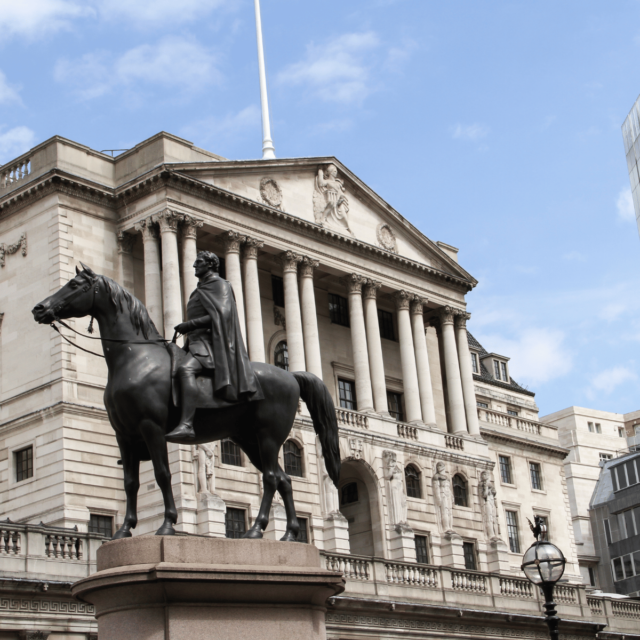Inflation Offers Route to Unconventional Policy Exit
The current levels of inflation, as well as being a problem, may also provide an exit plan back to normal policy rates. But, it will require co-ordination by central bankers on both sides of the Atlantic.

The current escalation in inflation poses a deep problem for central bankers, who have become accustomed to plaudits, rather than brickbats, over the past quarter of a century. Indeed, such has been their dominance that they have in many parts of the world been ‘the only game in town’ when it comes to domestic reform and political stability.
The re-emergence of inflation also poses a critical set of questions for two systematically important central banks, the US Federal Reserve and the European Central Bank (ECB), which account for monetary conditions for over 60% of global GDP. Their policies in response to the global financial crisis provided enormous vats of liquidity, and as the Covid-19 cloud amassed, further interventions helped limit the impact of lockdowns on economic activity. At the same time, policy rates hovered around zero. The stimuli thus provided was enormous by any historical standards.
And so far, so good – as the counterfactual in the absence of these interventions would probably have been a replay of the Great Depression.
The missing ingredient from these interventions was an exit plan for how to return to normality. And, strange as it may seem, the current inflation episode might provide just that – well, at least, if not a plan, a door into a more normal future. But it will require a clear focus on managing inflation carefully back to levels consistent with price stability and nothing else.
Last year, there was far too much policy focus on the question of whether the rise in inflation was temporary or permanent. But that was a misconceived debate. Inflation is ultimately determined by the set of central bank policies, and is not simply a state of nature revealed by ‘vengeful gods’. In every model, there is an economic structure subject to shocks for which, if we can identify them, we can then decide on the appropriate policy response. The subsequent path for a variable such as inflation is then a function of the economic structure, the shocks and the responses.
The credibility or belief we have in the policy regime also matters because it determines how forward-looking agents will respond to the same set of shocks. But credibility is also not revealed by ‘the gods’, and so requires steps in its support – which, in this case, implies actions that are broadly judged to be consistent with the inflation target.
Sat on their hands for too long?
In this sense, both the Fed and the ECB have been somewhat remiss. It could be argued that both have sat on their hands for too long.
However, the Federal Reserve is now working overtime to catch up with four increases so far this year that have taken the fed funds rate from 0.25–0.50% to 2.25–2.50%. Under the accepted norm of interest rate gradualism, such rapid climb in policy rates represents both a lot of learning in a short period about shocks and some acknowledgement that rates had previously been too low. And while there is a danger that this escalation in rates will be more likely to trigger a payments crisis in emerging economies with over $2 trillion of debt, the moves are welcome.
Looking ahead, though, it is not clear how the average inflation targeting regime will determine the next steps, as one wonders what requirements will be in place for a future inflation undershoot.
As it happens, pour encourager les autres (to encourage the others), there is a positive externality from such a rapid normalisation in the US. Other central banks can now argue internally that judgements about the global shock have been reached elsewhere and domestic policy rates can follow without leading to excessive exchange rate appreciations.
Indeed, in some countries, central bankers are arguing that policy should be set to offset depreciations against the US dollar, which are acting to amplify the impact of escalating energy and food prices in domestic currency terms. And so, at end of July, we had the ECB finally moving to tighten policy by 50 basis points across the board, with the interest rate on the main refinancing operations, the marginal lending facility and the deposit facility increased to 0.50%, 0.75% and 0.00% respectively.
This is a start. But it is hardly tight policy.
Arguably, the ECB faces more geopolitical risk, and thus has to move more gradually. At the same time, however, it looks as though the cost of these limited moves is the spectre of the ECB also acting against its own policy by adopting its Transmission Protection Instrument, which will seek to offset unwarranted premia in national public debt markets.
Unfortunately, nobody knows whether bond prices are a fair reflection of market risk, especially as under the ECB’s asset purchase programme, some €3.4 trillion ($3.5 trillion) of public debt, representing 28% of eurozone GDP, is held by the ECB. And, ultimately, if we have to introduce new instruments to support national economic adjustments at such low levels of interest rates, we must ask exactly how far away the eurozone still is from an optimal currency area.
It is hard not to draw the conclusion that extraordinary monetary policies in the eurozone have, rather than giving national states time to effect structural fiscal reform, instead allowed the status quo to be maintained, leaving us as far away from Robert Mundell’s conception as we were two decades ago when the monetary union was formed.
So where does this all leave inflation?
A two-speed approach from the Fed and ECB does not augur well for exchange rate volatility, the fight against inflation or financial stability. In our overall view of global prospects, we are not only revising own our central case down, but see dominant risks on the downside. And an unsynchronised tightening in monetary policies seems unlikely to help – as those of us with memories of the Plaza and Louvre accords may recall. So, although a normalisation in rates is welcome, our concern is that it may just stall.



















